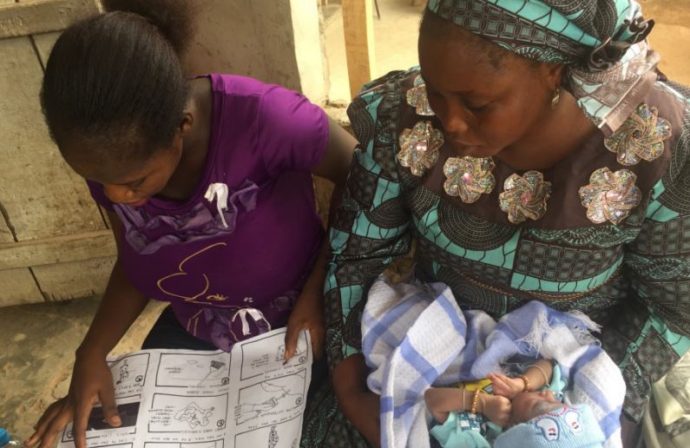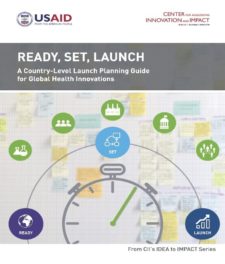Scaling country-level global health innovations
By Tara Newton, Senior Communications Associate, BID Initiative
Feb 15, 2017
Posted in Packaging

Photo: Dalberg Design.
What country should we launch our project in? Which barriers to scale will we encounter in the country? These are just a few of the considerations implementers working in global health often face. And while there is no shortage of global health innovations, scaling innovations can be challenging. Coordination among countries, funders, partners, and manufacturers can be complicated making it difficult to achieve scale. Late last year, USAID released a planning guide for global health innovations: Ready, Set, Launch; to bring a sharp focus to this critical pivot from global product development to targeted country selection and launch planning.
This guide is the newest addition to USAID’s Center for Accelerating Innovation and Impact’s (CII) Idea to Impact Series and was created with input from a diverse group of experts and lessons gathered from both successful and unsuccessful launches. The guide, supplemental toolkit, and case studies support the development of a country scale-up strategy and operational launch plan.
The Ready, Set, Launch guide addresses the many country-level factors involved to achieve scale; including existing user behaviors, local regulatory requirements, supply chains, key opinion leaders, and local religious and cultural norms that can vary within a country, state, county, or village.
Divided into three sections, the guide helps practitioners with country prioritization, strategy development, and implementation planning.
Choosing a launch country in a purposeful, iterative, and strategic way increases the chance of a successful scale-up.
“Country selection isn’t only about sizing the need. You also need to gauge and understand relationships in country—ultimately, it’s people on the ground who make product introduction and scale happen.” Tabitha Sripipatana, USAID, Family Planning and Reproductive Health
Set…Build a strategy
When building a strategy, a clear understanding of the chosen target market(s), key opportunities and barriers to scale, and interventions needed to overcome these barriers is critical to scale-up.
“When thinking about stakeholder engagement, look to existing coordination mechanisms. All stakeholders need to talk to each other and feel ownership of the strategy. It is crucial to identify and involve major stakeholders early so one partner isn’t driving scale-up alone.” Joseph Monehin, USAID/Nigeria
Launch! Plan for scale-up
This step entails developing a detailed operational launch plan to guide day-to-day activities, set realistic uptake targets, and create a plan to monitor progress.
“There are many products, services, and stakeholders working in Nigeria. To have a document outlining the activities related to implementation—as well as the timing and who is responsible— helps us in the ministry of health ensure accountability and track progress. We need to know what is happening in our country.” Dr. Bose Adeniran, Federal Ministry of Health, Nigeria
The BID Initiative was designed with sustainability and scale in mind not only in our demonstration countries, but other countries interested in improving data quality through the BID Learning Network. We are in the midst of scale and sustainability planning and are encouraged by resources such as this guide, developed by our partners to provide practitioners with key questions and a more systematic approach to launch and scale-up. Stay tuned as we share more on our plans for sustainability and scale this year.

